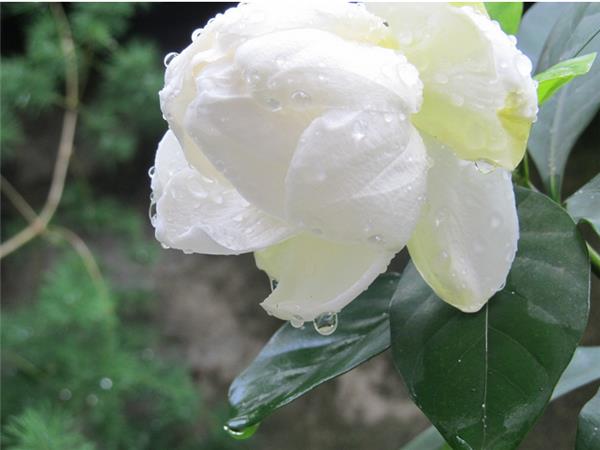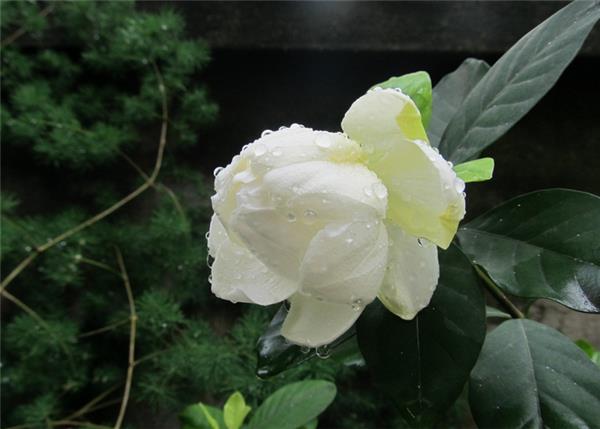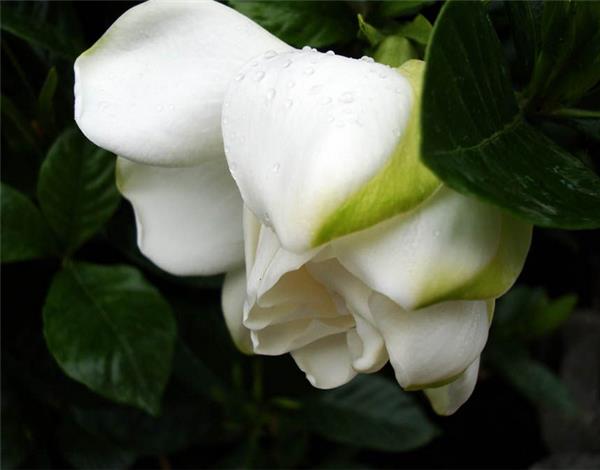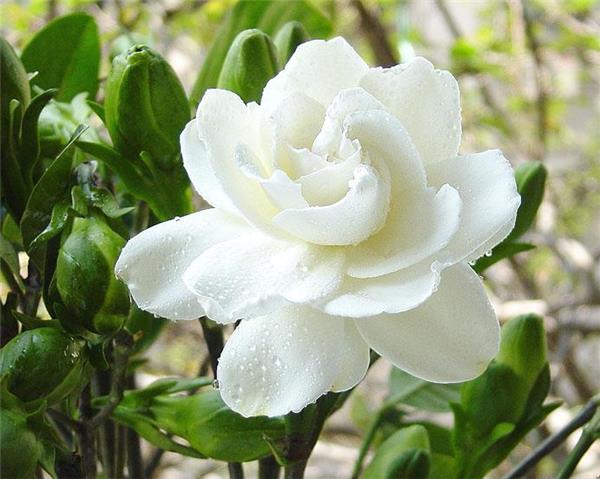Culture method of Gardenia jasminoides
What is the breeding method of gardenia jasminoides? What's the difference between gardenia culture and gardenia culture? Let's take a look at it together.

Culture method of Gardenia jasminoides
The main results are as follows: (1) Gardenia likes acidic soil, while most of the soils in the north are neutral or alkaline, which leads to the lack of iron that can be used by plants, which is one of the main reasons for the yellowing of leaves. To this end, the cultivation of Gardenia jasminoides should choose fertile acid culture soil. Generally, it can be mixed with 4 parts of rotten leaf soil, 4 parts of garden soil and 2 parts of sandy soil. Then per kilogram of soil mixed with 1 kilogram of sulfur powder. Rain Water or fermented rice panning water is suitable for watering gardenia. During the growth period, 0.2% ferrous sulfate is watered every 10-15 days or alum fertilizer water is applied every 10-15 days (the two can be carried out alternately). This can not only prevent the soil from turning sour, but also replenish the soil with iron in time, thus preventing the leaves from turning yellow.

(2) Gardenia likes to be moist. In addition to keeping the basin soil moist at ordinary times, we must also pay attention to increasing air humidity. This is because the climate of the north is different from that of the south. The north is dry in spring, often blows dry winds, strong light intensity in summer, hot weather, and cold and dry winter. Therefore, in spring and summer, it is necessary to spray foliage with clear water every morning and evening and sprinkle water to the nearby ground to increase air humidity. Watering should be less in winter, but branches and leaves still need to be sprayed and washed frequently to keep the leaves clean.
(3) Gardenia likes light, but is afraid of strong light exposure. If exposed to the sun, the leaves turn yellow and whiten until they fall off. Therefore, the summer must be placed under the shade or in a place with scattered light, so that it can see some sunlight in the morning and evening, so as to prevent the leaves from turning yellow.
(4) Gardenia jasminoides is not cold-resistant, so it is necessary to pay attention to the room and out of the room. It is generally in the middle of October to put it in the sunny place, and the room temperature should be kept at 10 ℃-12 ℃. It is not advisable to leave the room too early in the next spring, usually in late April. If the above four points can be achieved, gardenia can not only settle down in the north, but also have numerous green leaves and fragrant flowers.

Let's take a look at the cultivation points and pruning methods of Gardenia jasminoides.
Key points of cultivation of Gardenia jasminoides
The cultivation of Gardenia jasminoides has strict requirements on the soil. It grows well in the acidic soil of pH5-6, while the soil in the north is generally neutral or alkaline. In this soil, due to the hydrolysis of iron salts, iron hydroxide insoluble in water is formed, which can not be absorbed by plants, resulting in serious iron deficiency. Although iron is not a component of chlorophyll, it is a necessary condition for the formation of chlorophyll, so iron deficiency blocks the synthesis of chlorophyll, so photosynthesis can not be carried out normally, which is the main cause of plant starvation and death.
In addition, iron is a component of some oxidases and plays an important role in respiration. If the gardenia jasminoides is iron deficient, it will affect the normal physiological activity of the plant. To solve the problem of iron deficiency, the method of watering "alum fertilizer water" can achieve good results. In addition, a small amount of black alum powder can also be added to the basin soil, the dosage is 0.5% of the weight of the basin soil, and 0.5% of 1.0% black alum water is poured every 10-15 days during the growing season, which can also ensure the iron requirements of gardenia, so that it can grow and develop normally.

Pruning method of Gardenia jasminoides
Pruning the dormant period of Gardenia jasminoides
Heavy pruning is the main pruning in dormant period, and gardenia jasminoides belongs to evergreen vegetation, so yellow leaves fall before spring shoot occurs in dormant period. The main purpose of dormant pruning is to cut off disease and insect branches, dead branches, overlapping branches and so on, in order to form a certain plant shape and maintain the balanced growth of backbone branches.
If you want to see the flowers earlier in the next year, the big-leaf gardenia is generally trimmed in the dormant period, but can not be re-cut, if you want to see the flowers later, you can cut them again.
Long-term pruning of gardenia jasminoides peanut
The amount of pruning in the growing period is mainly light pruning, and the suitable period is from budding to before the growth of new shoots stops. The main purpose of pruning during the growing period is to control the growth of new shoots, improve light conditions and promote flower bud differentiation.
Generally speaking, gardenia flowers can be cut more when they are strong and exuberant, and less if they are thin. Modeling needs, usually to cut off cluttered cross branches, overlapping branches, parallel branches, whorled branches, opposite branches, thin branches, sick branches and so on. If the nutrients of the branches are concentrated, the branches can grow strong.
Related
- Wuhan Hospital Iron Tree Blooming Result Was Instantly Frightened by the Gardener Master
- Which variety of camellia is the most fragrant and best? Which one do you like best?
- What is the small blue coat, the breeding methods and matters needing attention of the succulent plant
- Dormancy time and maintenance management of succulent plants during dormancy
- Minas succulent how to raise, Minas succulent plant pictures
- What are the varieties of winter succulent plants
- How to raise succulent plants in twelve rolls? let's take a look at some experience of breeding twelve rolls.
- Attention should be paid to water control for succulent plants during dormant period (winter and summer)
- Watering experience of twelve rolls of succulent plants
- Techniques for fertilizing succulent plants. An article will let you know how to fertilize succulent plants.



